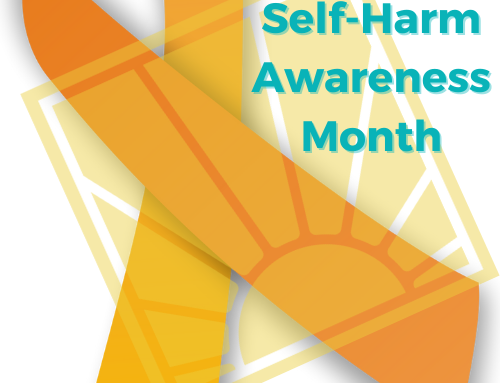Whether it’s unique to our culture or not, we Americans seem to favor extremes. We gravitate toward superlatives. Teenagers in particular are drawn to whatever’s fastest, easiest, edgiest, biggest, newest or “best” Hence the teenager’s penchant for extreme music, extreme hairstyles and extreme sports. As a teen’s brain develops, whole new cognitive worlds open up; pushing the envelope is, in part, a way of exploring these new realms. It’s also a teenager’s developmental prerogative to create a distinct and independent identity, which provides another incentive for exploring extremes.
But like our culture in general, the teenager’s appetite for extremes is at best double edged. Short term, living on the edge a bit can help teens formulate their own adult identity, develop competencies and passions, and move forward in their journey toward independence. Long term, however, an immoderate way of life is associated with anxiety, unhappiness, health problems and even a shorter life span. As parents, we can’t (and shouldn’t) squash our teenager’s appetite for intensity. We can, however, temper and guide it.
A concept called “blue zones” can help parents construct an environment that favors moderation and balance and, in turn, improves emotional and physical health. The blue zones theory resulted from a National Geographic research project led by explorer Dan Buettner. Buettner and his team searched for regions in which people had the greatest longevity (i.e. the highest concentrations of centenarians), self-reported quality of life and physical health. He found a few geographic regions that spectacularly exceed the averages in these quality of life dimensions and called these blue zones (see the book Blue Zones for more on this research).
What he found were several cultural themes that ran through each of these happy, healthy, long-living regions, which include Okinawa, the Nicoya Peninsula in Costa Rica, Loma Linda (a largely Seventh-Day Adventist community) in California, and others. All of these cultures favored balance and moderation in several aspects of life that are more easily achievable at the family and community level than they are at the individual level.
So your best avenue for mitigating the hazards associated with your teenager’s appetite for extreme behavior may be to create a home environment that favors the kind of balance families in so-called blue zones enjoy. If your child happens to be in treatment, this is the perfect opportunity for you to reconfigure household habits in preparation for your teen’s return home.
BRINGING BLUE HOME
- FAMILY FIRST: Living near extended family, spending time together and actively cultivating a quality, faithful relationship with one’s spouse greatly increases quality of life in blue zones. Even if your teen is resistant to family time, success in this arena it can create balance and great value for him or her.
- HAVE SOME FAITH: Regular faith-based activity/involvement is associated with between 4 and 14 extra years of healthy living. Modeling this behavior will benefit you and set a healthy household tone for your teenager.
- CULTIVATE COMMUNITY: The quality, breadth and depth of friendships are key elements of family health in blue zones. Teens often tend toward cliques and extreme friendship groupings. Exposing your teen to your own friends and their children can create opportunities for broader, healthier relationships and friendship selection.
- LIFESTYLE EXERCISE: The blue zone researchers found that blue zone populations had organic and moderate ways of exercising that were integrated into daily life. In blue zones, people walk as a primary means of transportation. Chores and household tasks are often done by hand rather than with power tools. Their lives, in other words, are designed for activity rather than convenience.
- PURPOSEFUL LIVING: Knowing and talking about your values, goals and passions can help you live with an increased sense of purpose. Living with a clear sense of purpose is associated with greater happiness and longevity. Your teen will pick up on this household habit of discussing what makes you tick and is likely to respond in kind (perhaps, of course, with an opposing point of view, but with a point of view, nonetheless!).
- RELAXING: Stress causes inflammation and inflammation causes disease. If you’re a type “A” parent, you’re modeling an extreme lifestyle that can cause real problems for you and your teenager. Incorporate naps, meditation, yoga and other relaxation based activities to balance out your extreme activity and model a balanced lifestyle.
- MEALTIMES: It’s typical teen behavior to charge through the kitchen or fast food drive through, load up on calories and go! This kind of eating can lead to unhealthy body weight and poor food choices. A few blue zone habits can turn these behaviors on their head, leading to a significant reduction in calories over the course of the day. Large breakfasts, prayer or other forms of pre-meal thanksgiving, and eating as a family are a few proven methods for reducing caloric intake associated with our grab and gorge culture.
- DIET: To quote the famous dietary researcher Robert Pollan, “eat food, mostly plants, and not too much.” This approach to eating is balanced and is proven to help with physical and emotional health. Keeping meat to a minimum (small portions once or twice a day) is also associated with longevity and health IN blue zones.
- SOBRIETY AND MODERATION: If you drink, drink in moderation. While an excessive or compulsive approach to alcohol consumption can cause emotional, social and health problems, a couple of glasses of wine a day with food is associated with increased longevity and emotional health. While your teen is not in a position to join you in this habit, observing your moderate consumption can play a large role in his or her future attitudes toward alcohol.

